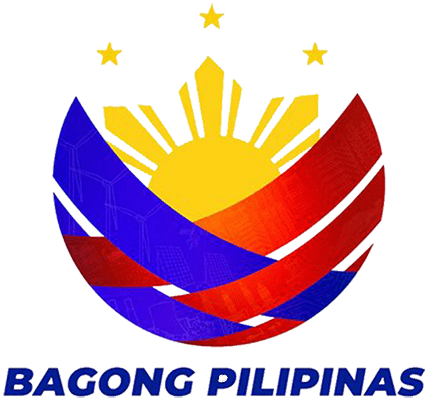NEWS AND UPDATES
Philippines towards a Science-Based Herbal Industry: Initiatives, Challenges, Solutions
Representatives from government, non-government organizations, private and academic sectors gathered in a roundtable discussion entitled: “Strengthening the Science-Based Herbal Industry in the Philippines: Issues, Challenges and Solutions†organized by the National Academy of Science and Technology (NAST) last February 15, 2012 at the Traders Hotel in Manila.
Existing Initiatives
Dr. Francis Vicente S. Ras, Education and Promotion Ofï¬cer V of the Philippine Institute for Traditional and Alternative Health Care (PITAHC) shared the efforts of the Institute in developing herbal products. PITAHC is a government program set up in 1997 by the Department of Health (DOH) to accelerate the development of traditional and alternative health care in the country. Today, PITAHC manages four herbal processing plants in Cagayan, Leyte, Cotabato and Davao which are able to produce marketable herbal products, namely: lagundi tablet and syrup for cough and asthma, sambong tablet as anti-urolithiasis, tsaang gubat tablet as anti-colic or anti-spasmodic and herbal soaps from akapulko, cucumber, raddish, kamias, calamansi, guava, carrot and papaya.
Dr. Jaime C. Montoya, Executive Director of the Philippine Council for Health Research and Development of the Department of Science and Technology (PCHRD-DOST) presented the government roadmap for the development of science-based herbal products for health and wellness. He said that part of PCHRD’s drug discovery and development program includes the utilization of natural substances from terrestrial and marine sources that can be developed up to the pre-clinical stage for common infectious diseases and lifestyle-related disorders.
Dr. Gemiliano D. Aligui, President of Asian Foundation for Tropical Medicine, Inc. discussed two existing administrative orders which refer to confidence and public trust on herbal products. The A.O 184 s2004 refers to guidelines on the registration of traditionally-used herbal products while A.O. 172 s2004 indicates guidelines on the registration of herbal medicines. The A.O 184 s2004 limits the folkloric use of herbal medicines because this law requires manufacturers to state in the label any of the following statements applicable: 1) “The Traditional application/use of this product has not been evaluated by the Philippine Food & Drugs Administrationâ€; 2) “If symptoms persist, consult your doctorâ€; or 3) “Not allowed for use in pregnant, lactating mothers, and children below 18 years.†On the other hand, the A.O. 172 s2004 establishes the clinical efficacy of herbal medicine because it subjects the manufacturer to report findings of the study from Galenical (Phase I) up to clinical trials (Phase III) of the herbal drugs prior to public use. It further states that herbal drugs should be validated by the National Integrated Research Program on Medicinal Plants (NIRPROMP) of the PCHRD-DOST or other competent research centers accredited and approved by the Philippine Food and Drug Administration (FDA).
Identified Challenges
Dr. Rainier B. Villanueva, Founding President of the Chamber of Herbal Industries of the Philippines, Inc. reported the issues and challenges of the natural product industry from the perspective of industry and the private sector. According to him, the herbal industry is confronting the following challenges: (1) lack of scientific claims to support product claims; (2) outdated policies of FDA on product registration; (3) no standardization of natural ingredients; (4) unscrupulous businessmen taking advantage of the popularity of natural and organic products by making claims at the expense of the consumers; (5) lack of integrated, inter-agency programs by the government to strengthen the industry like what China, Malaysia and India are doing; (6) minimal implementation of good agricultural practices among the agriculture sector; (7) no clearing house or centralization of government-funded R&D studies; and (8) lack of laboratory dedicated to the natural product industry.
Dr. Lourdes B. Cardenas, faculty member of the Plant Biology Division of the University of the Philippines Los Banos (UPLB) tackled the issues relating to quality of raw materials for use in herbal products. According to her research, the following are needed to be subjected under quality control in order to address raw material and processing quality issues: (1) source material which refers to the correct variety, species, chemotype, ecotype, and part and stage development of the plant to be processed; (2) cultivation of the plant species; (3) post harvest handling; (4) storage (5) residues, heavy metals and microbial contamination; and (6) security of raw materials to radioactive isotopes.
Ms. Irene M. Villaseñor, faculty member of the Institute of Chemistry of the University of the Philippines Diliman identified the following issues on establishing quality parameters for herbal products: (1) patent protection; (2) data on chemical identity, purity and consistency; (3) information related to absorption, distribution, metabolism and elimination of drug metabolites; and (4) chemical standardization.
Proposed Solutions
Stakeholders came up with the following possible interventions to address the identified challenges and improve existing initiatives: 1) partnership among research institutes and organizations to generate more scientific evidences to substantiate and validate claims of natural products and ingredients; 2) technology transfer for sustainable organic farming and propagation; 3) acquisition and use of appropriate equipment and machinery to boost industry capacities; 4) provision of assistance to institutions in attaining various certifications accepted and recognized by international market; 5) investments in the development of natural products and ingredients industries; 6) promotion and distribution of Philippine products in the foreign market through collaboration between Filipino and Filipino-foreign entrepreneurs and businessmen; 7) capacity building for experts in the field of Medicinal Chemistry; and 8) establishment of centralized facilities for R&D studies.




